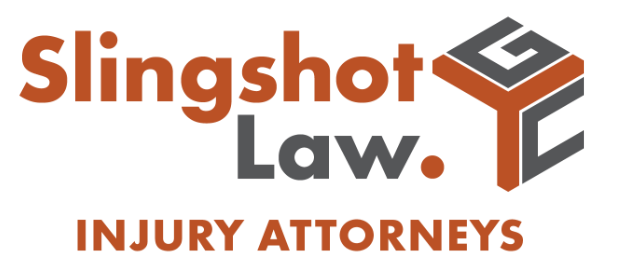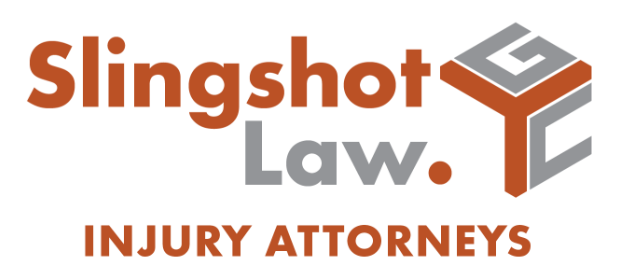Our Austin slip and fall lawyer builds premises liability claims by investigating how your fall occurred, documenting the property owner’s responsibility, and negotiating with insurance companies. At Slingshot Law, we represent people injured at Austin businesses, apartment complexes, and public properties where dangerous conditions caused preventable accidents.
Property owners throughout Austin owe legal duties to maintain safe premises for visitors. When falls happen as a result of negligence like unmarked wet floors, broken handrails, poor lighting, or ignored hazards, property owners may be held accountable.
While you’re managing recovery and medical appointments, we handle the legal work. Call us now for a free consultation at (866) 647-1311.
Key Takeaways for Austin Slip and Fall Claims
- Property owners owe duties to maintain safe premises, warn of known hazards, and conduct reasonable inspections to discover dangerous conditions
- “Constructive notice” means property owners should have known about hazards through reasonable inspection, even without actual knowledge
- Surveillance footage may be deleted or overwritten; immediate legal action preserves critical video evidence before it disappears
- Texas proportionate responsibility rules reduce recovery by your percentage of fault; findings of more than 50 percent fault bar recovery entirely
- Slingshot Law slip and fall attorneys work on contingency; you pay nothing unless we recover compensation
Why Austin Chooses Slingshot Law for Slip and Fall Cases
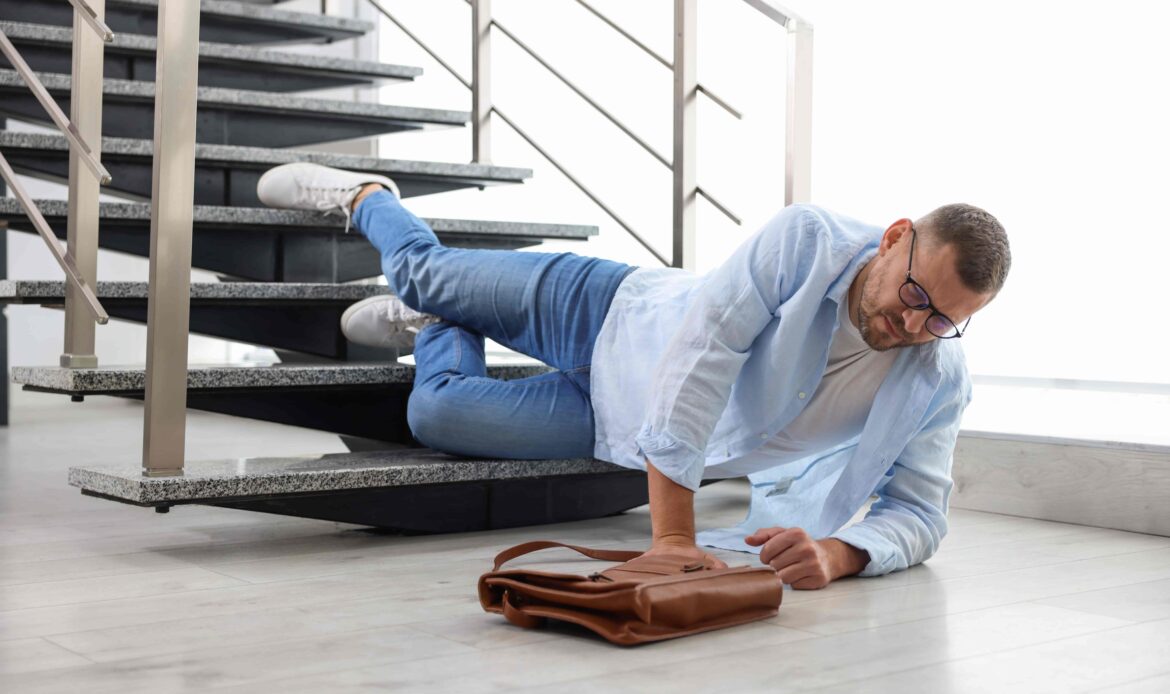
Premises liability cases require immediate evidence preservation and knowledge of Texas property owner duties. After a slip, trip, or fall, you need experienced representation from lawyers who know how to identify evidence, calculate your damages, and create compelling demand packages.
Our Austin slip and fall legal services include:
- Rapid evidence preservation through preservation letters securing surveillance footage, incident reports, maintenance logs, and inspection records before deletion or destruction
- Dangerous condition documentation photographing hazards, measuring lighting levels, and inspecting flooring conditions before property owners repair defects
- Witness identification and interviews collecting employee and customer statements before memories fade or employment changes
- Property code investigation analyzing building codes, safety regulations, and industry standards the property violated
- Medical documentation coordination working with treating physicians to link injuries directly to fall incidents
- Insurance negotiation handling all communications with property owner insurers who dispute notice and minimize injury severity
- Trial preparation and litigation building cases that encourage fair settlements or taking cases to court when property owners refuse adequate compensation
- Contingency fee representation advancing all case costs without upfront payment—you pay nothing unless we recover compensation
While you focus on medical treatment and recovery, we handle investigations, expert coordination, and legal proceedings. We communicate clearly, respond promptly to questions, and pursue compensation reflecting the impact of your injuries.
Contact us now to schedule your free slip and fall case consultation at (866) 647-1311.
Common Locations for Austin Slip and Fall Accidents
Where your fall occurred helps identify liable parties and specific safety violations that may have caused injuries.
Grocery Stores and Retail Locations
Grocery stores throughout Austin generate slip and fall claims when employees fail to clean spills promptly, place warning signs, or inspect aisles regularly. Produce departments create slip hazards from dropped fruit and vegetables. Refrigerated sections leak water onto floors. Stockers leave boxes and merchandise in walkways.
Texas law imposes duties on store owners to conduct reasonable inspections, warn of known hazards, and clean spills within reasonable times. “Constructive notice” means stores should have known about hazards through proper inspection schedules, even without actual knowledge. Surveillance footage showing how long spills remained unaddressed proves constructive notice.
Restaurants and Bars
Downtown Austin restaurants, Sixth Street bars, and establishments throughout South Congress and the Domain create slip hazards from spilled drinks, food debris, and recently mopped floors without warning signs. Outdoor patios with uneven surfaces, broken tiles, or inadequate lighting cause trip-and-fall incidents.
Restaurant and bar owners owe duties to maintain safe premises for customers. Health codes and building regulations establish safety standards. Violations of these codes create negligence per se (automatic liability) when regulations are breached.
Apartment Complexes
Apartment stairways with broken handrails, inadequate lighting, or missing non-slip treads cause severe injuries. Parking lots with potholes, uneven pavement, or inadequate drainage create trip hazards. Pool areas with slippery surfaces and no warning signs generate liability.
Property management companies and apartment owners face premises liability for failing to maintain common areas, conduct regular inspections, or repair known defects. Tenant complaints documenting prior knowledge of hazards strengthen constructive notice arguments.
Parking Lots and Sidewalks
Cracked pavement, potholes, inadequate lighting, and unmarked elevation changes in parking lots cause falls throughout Austin. Shopping centers, office buildings, and restaurants maintain parking areas owing duties to visitors.
Uneven sidewalks, broken concrete, and tree root damage create trip hazards. Property owners who control sidewalks adjacent to their premises face liability. Falls on city-owned sidewalks implicate the City of Austin under the Texas Tort Claims Act, requiring specific notice procedures within six months.
Hotels and Hospitals
Hotel lobbies with recently mopped floors, pool areas without proper warnings, or poorly maintained walkways create slip hazards. Hospitals and nursing homes owe heightened duties to patients and visitors, particularly those with mobility limitations.
These establishments face direct liability for maintenance failures and vicarious liability for employee negligence in creating or failing to address hazards.
What Makes a Strong Slip and Fall Claim in Austin, TX?
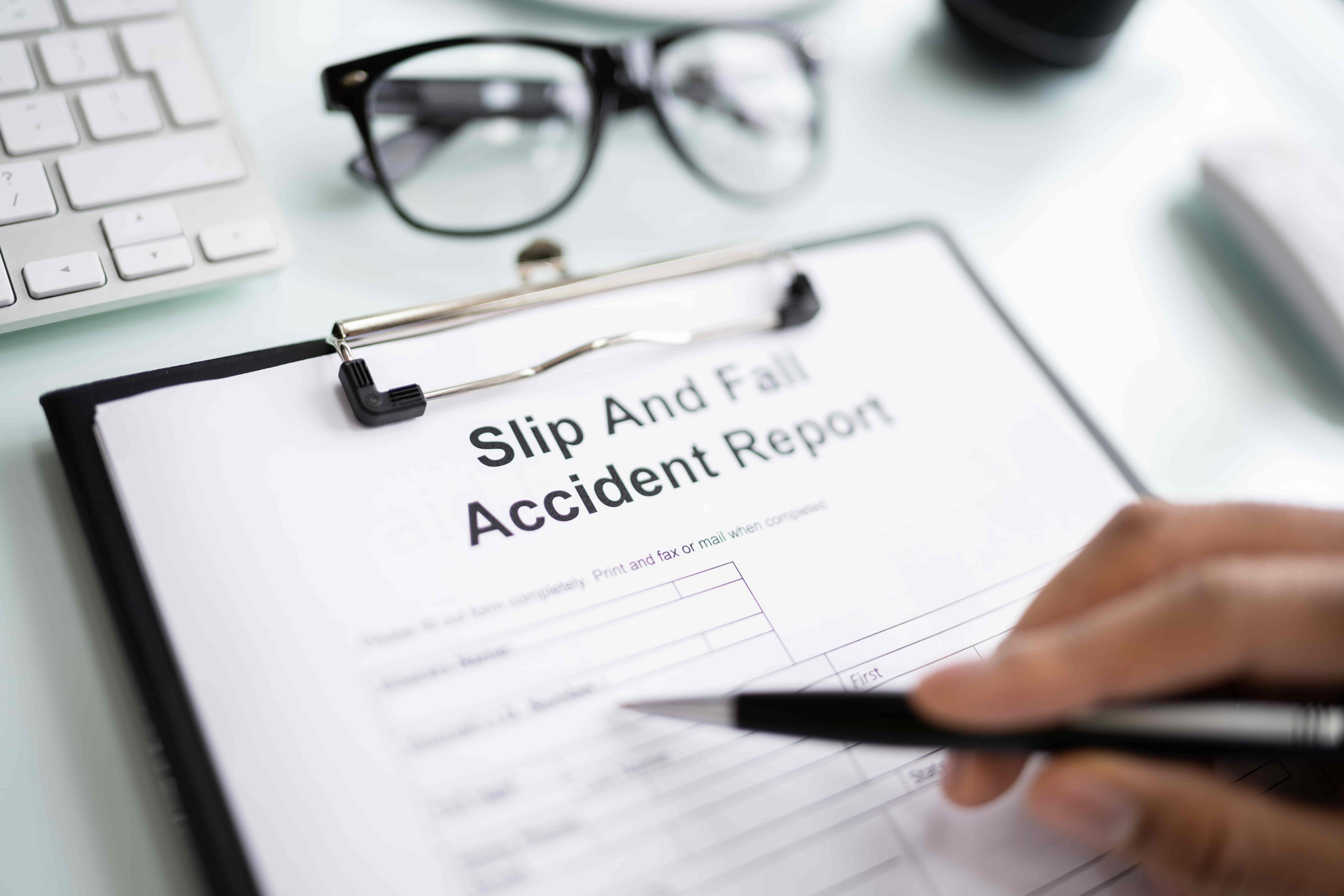
Property owner insurance companies may challenge notice, dispute injury causation, and minimize damages. Our Austin injury lawyers address these strategies through comprehensive evidence gathering.
Your Slingshot Law slip and fall attorney secures crucial evidence like:
- Surveillance video from the date and time of your fall showing the hazardous condition, how long it existed, and whether employees passed without addressing it
- Incident reports filed by property owners documenting the fall, hazard description, and any statements made at the scene
- Photographs of the exact fall location, hazardous condition, lack of warning signs, and lighting conditions
- Maintenance records showing inspection schedules, repair histories, and prior complaints about similar hazards
- Witness statements from employees who knew about the hazard and customers who saw your fall
- Building code records establishing safety standards the property violated
- Medical records documenting immediate symptoms, diagnostic findings, and treatment linking injuries to the fall
- Weather reports for outdoor falls proving conditions like rain created additional hazards property owners should have addressed
If warranted, our lawyers also work with different experts to help support your claim. We may coordinate with engineers who measure lighting levels, test floor friction, and document code violations, and work with medical experts to link fall mechanics to specific injuries.
Injuries in Austin Slip and Fall Cases
Slip and fall accidents cause injuries ranging from soft-tissue strains to catastrophic trauma requiring surgery and long-term care.
Injuries and symptoms we often see after Austin slip and fall accidents include:
- Hip fractures particularly affect older adults and require surgical repair with pins, plates, or hip replacement. Recovery demands months of physical therapy and may create permanent mobility limitations.
- Wrist and arm fractures occur when victims extend arms to break falls. Compound fractures, nerve damage, or improper healing create lasting impairment affecting daily tasks and work duties.
- Ankle fractures and sprains require immobilization, surgery, and rehabilitation. Severe sprains damage ligaments causing chronic instability and pain.
- Head injuries and concussions result from striking floors or fixtures during falls. Traumatic brain injuries cause cognitive deficits, memory problems, and personality changes requiring neurological care.
- Spinal injuries including herniated discs, compression fractures, and nerve damage cause chronic pain, mobility limitations, and may require surgery or ongoing pain management.
- Shoulder injuries including rotator cuff tears and dislocations occur from impact or bracing during falls. These injuries often require surgical repair and extensive physical therapy.
Medical documentation showing injury extent and linking trauma directly to the fall incident proves damages insurers attempt to minimize.
Compensation in Texas Slip and Fall Cases
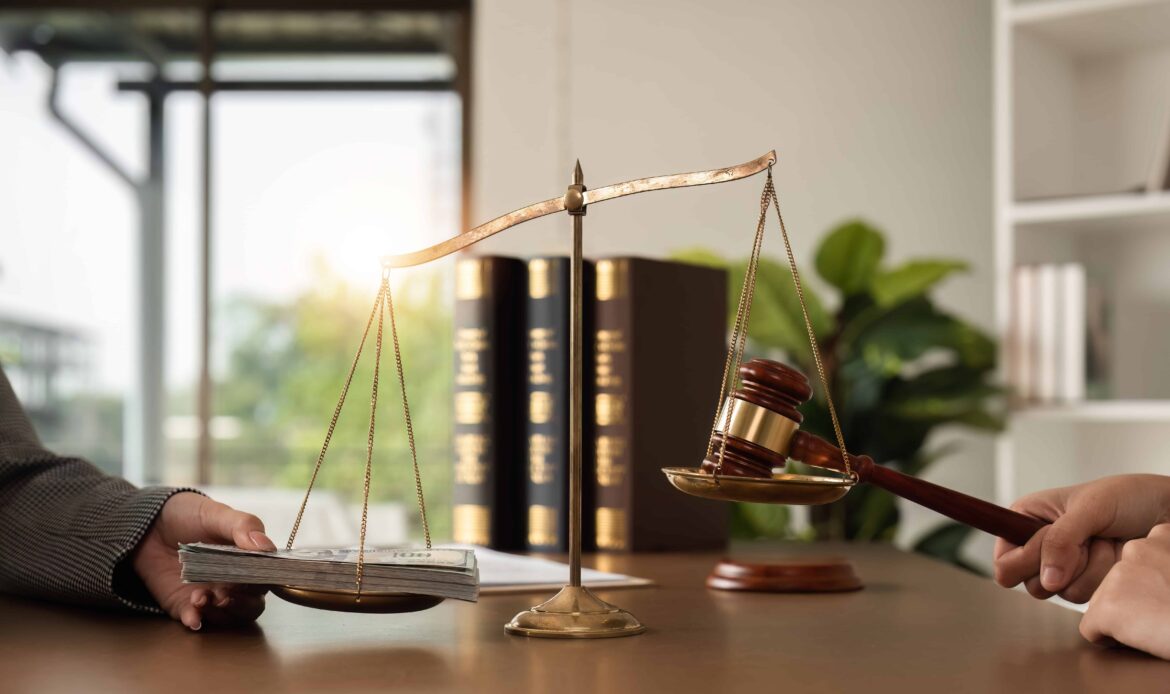
Texas law permits recovery for both economic and non-economic losses when property owner negligence causes injuries.
Economic damages compensate for measurable financial losses. This may include your:
- Medical expenses like emergency care, diagnostic imaging, surgery, physical therapy, and ongoing treatment
- Future medical costs for permanent injuries requiring continued care
- Lost wages from missed work during recovery documented through employer statements
- Diminished earning capacity when permanent limitations affect job performance or prevent returning to physical labor
- Out-of-pocket costs including medical equipment, home modifications, and transportation to appointments
Non-economic damages address intangible harm. This may include your:
- Pain and suffering from physical injuries and reduced quality of life
- Mental anguish including anxiety, depression, and fear of falling
- Physical impairment limiting mobility and independence
- Loss of enjoyment of life when injuries eliminate activities and hobbies
Settlement amounts depend on injury severity, treatment duration, permanency of limitations, clarity of property owner notice, strength of video and photographic evidence, and available insurance coverage.
What if I Was Partially at Fault for My Fall?
Under Texas Civil Practice & Remedies Code § 33.001, if you share some responsibility for your fall, any compensation awarded gets reduced by your percentage of blame. If a jury finds you more than 50 percent at fault, you cannot recover damages.
Property owner defense attorneys may argue you were distracted by your phone, failed to watch where you walked, or wore inappropriate footwear. Early investigation preserves evidence establishing the property owner’s duty violations.
Proving Property Owner Liability in Texas
Texas premises liability law requires proving the property owner knew or should have known about the dangerous condition and failed to make it safe or warn visitors.
Actual Notice
Actual notice exists when property owners, managers, or employees had direct knowledge of the hazard. Evidence proving actual notice includes employee statements acknowledging awareness, maintenance requests documenting complaints, or incident reports showing prior falls at the same location.
Constructive Notice
Constructive notice, the legal principle holding property owners responsible for hazards they should have discovered through reasonable inspection, applies when hazards existed long enough that proper inspection would have revealed them.
For example, if surveillance video shows a spill remained on a grocery store floor for 45 minutes while multiple employees passed nearby, the store may face liability under constructive notice even if no employee saw the specific spill.
Inspection logs, employee schedules, and industry standards establish reasonable inspection frequency.
Duty to Warn
Even when property owners cannot immediately eliminate hazards, they owe duties to warn visitors. Wet floor signs, caution tape, barriers, and adequate lighting fulfill warning obligations. Failure to place warnings despite knowing about hazards creates liability.
Linking Your Injury to the Dangerous Condition
Proving liability requires more than showing a hazard existed. You must also demonstrate that the specific dangerous condition directly caused your injuries. Medical records documenting immediate symptoms, emergency room visits shortly after the fall, and physician statements linking your injuries to the incident helps establish this causal connection.
Steps to Take After a Slip and Fall in Austin
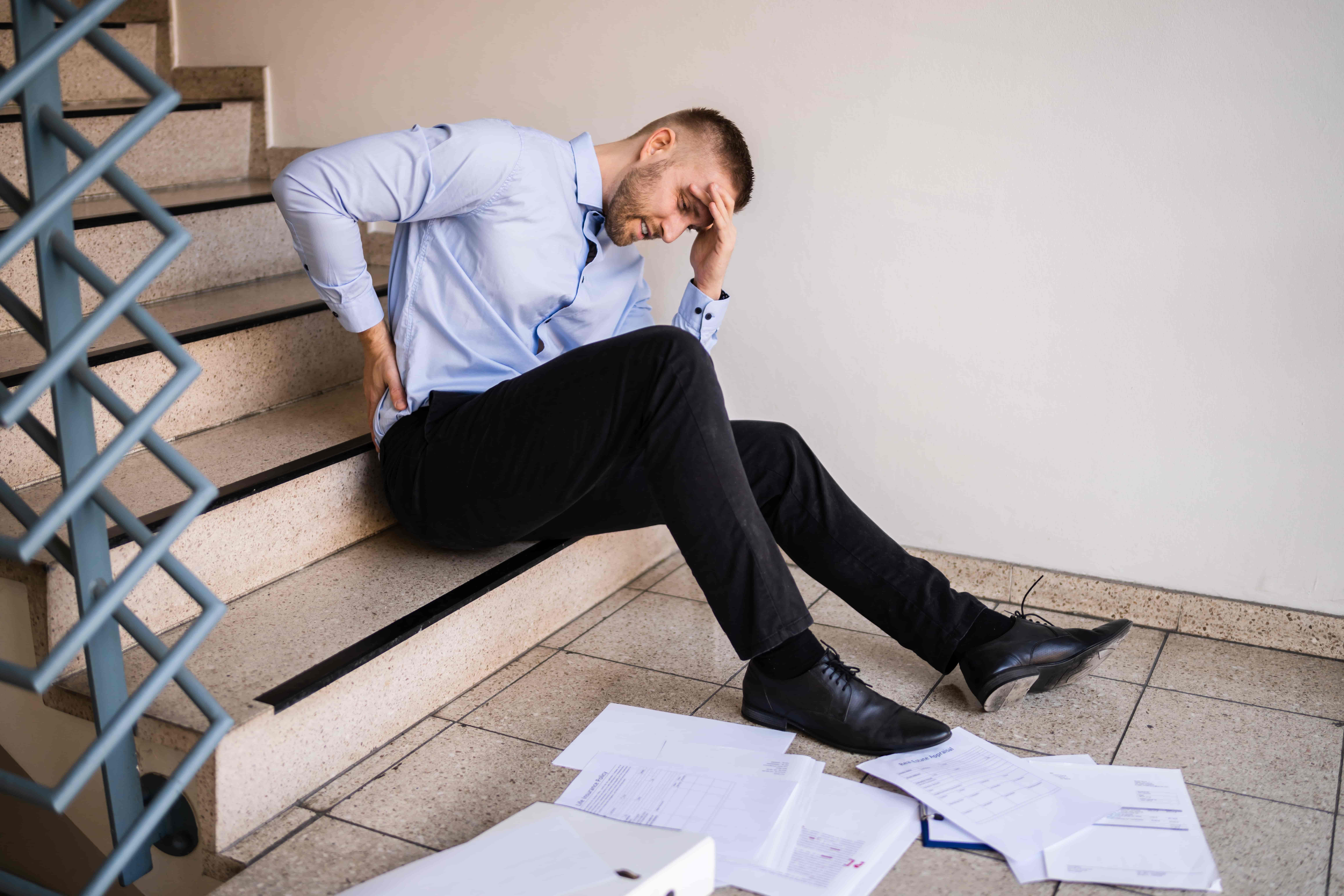
Actions taken immediately after falls shape claim outcomes and preserve critical evidence.
- Seek medical attention if you have not already. Some injuries including concussions, fractures, and internal trauma may not produce immediate symptoms. Emergency departments document injuries before symptoms worsen.
- Report the fall to property management. Notify store managers, restaurant owners, apartment management, or property staff. Request they document the incident in writing and provide you a copy of the incident report.
- Photograph the hazard and scene. Take pictures of the exact fall location, dangerous condition, lack of warning signs, lighting conditions, and visible injuries before property owners repair defects.
- Identify witnesses. Obtain names and contact information from anyone who saw your fall or the hazardous condition. Employee witnesses and customer statements corroborate your account.
- Preserve clothing and footwear. Keep items worn during the fall in their post-incident condition. These may become evidence disputing claims about inappropriate footwear.
- Document injuries and treatment. Photograph visible injuries like bruises, swelling, and cuts. Save all medical bills, prescription receipts, and therapy invoices.
- Do not give recorded statements to property owner insurers. You are not required to speak with the property owner’s insurance company. Politely decline and let your attorney handle communications.
- Contact an Austin slip and fall lawyer immediately. Slingshot Law’s injury team sends preservation letters to secure surveillance footage and incident reports, investigates and gathers evidence, files claims, and advocates for your rights during negotiations.
FAQ for Our Austin Slip and Fall Lawyers
Do I Have a Slip and Fall Case in Austin?
You may have a case if a property owner’s negligence caused your fall and injuries. Key factors include whether a dangerous condition existed, whether the property owner knew or should have known about it, whether they failed to fix it or warn visitors, and whether you suffered documented injuries requiring medical treatment.
How Do I Prove the Business Knew About the Hazard?
Actual notice proves through employee statements, maintenance requests, or prior incident reports. Constructive notice proves through surveillance footage showing how long the hazard existed, inspection logs revealing inadequate inspection frequency, or industry standards establishing reasonable care protocols the property violated.
What Is the Texas Statute of Limitations for Slip and Fall Claims?
The Texas statute of limitations allows two years from the fall date for most premises liability claims. Falls on government property require written notice within six months under the Texas Tort Claims Act. Missing these deadlines bars recovery regardless of case strength.
How Much Does an Austin Slip and Fall Lawyer Cost?
Our Austin slip and fall lawyers work on contingency, meaning you pay nothing upfront. Fees come only from settlement or verdict. Slingshot Law advances all case costs including expert witnesses and evidence preservation, recovering expenses only if we win compensation.
How Long Do Slip and Fall Cases Take in Austin?
Settlement timelines vary based on injury severity, liability clarity, and insurance company cooperation. Straightforward cases with clear video evidence and serious injuries may settle quicker than complex cases involving disputed notice or permanent disabilities.
Schedule a Free Consultation With an Austin Slip and Fall Lawyer
After a slip in Austin, you need representation that understands Texas premises liability law, moves quickly, and can coordinate experts, when needed, to prove dangerous conditions and property owner notice. Slingshot Law steps in immediately to secure this crucial evidence and manage the claims process.
Call (866) 647-1311 for a free case review. Our Austin slip and fall lawyer will listen to your story, answer your questions, and explain your options. We advance all case costs and recover fees only if we secure compensation.
Austin Office
Address: 1802 Lavaca St, Austin, TX 78701
Phone: 866-647-1311
